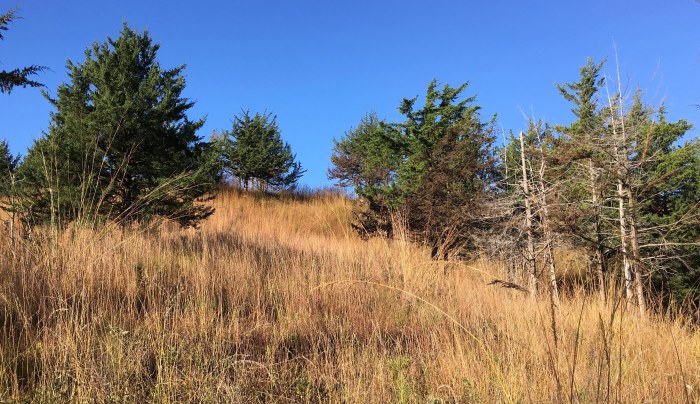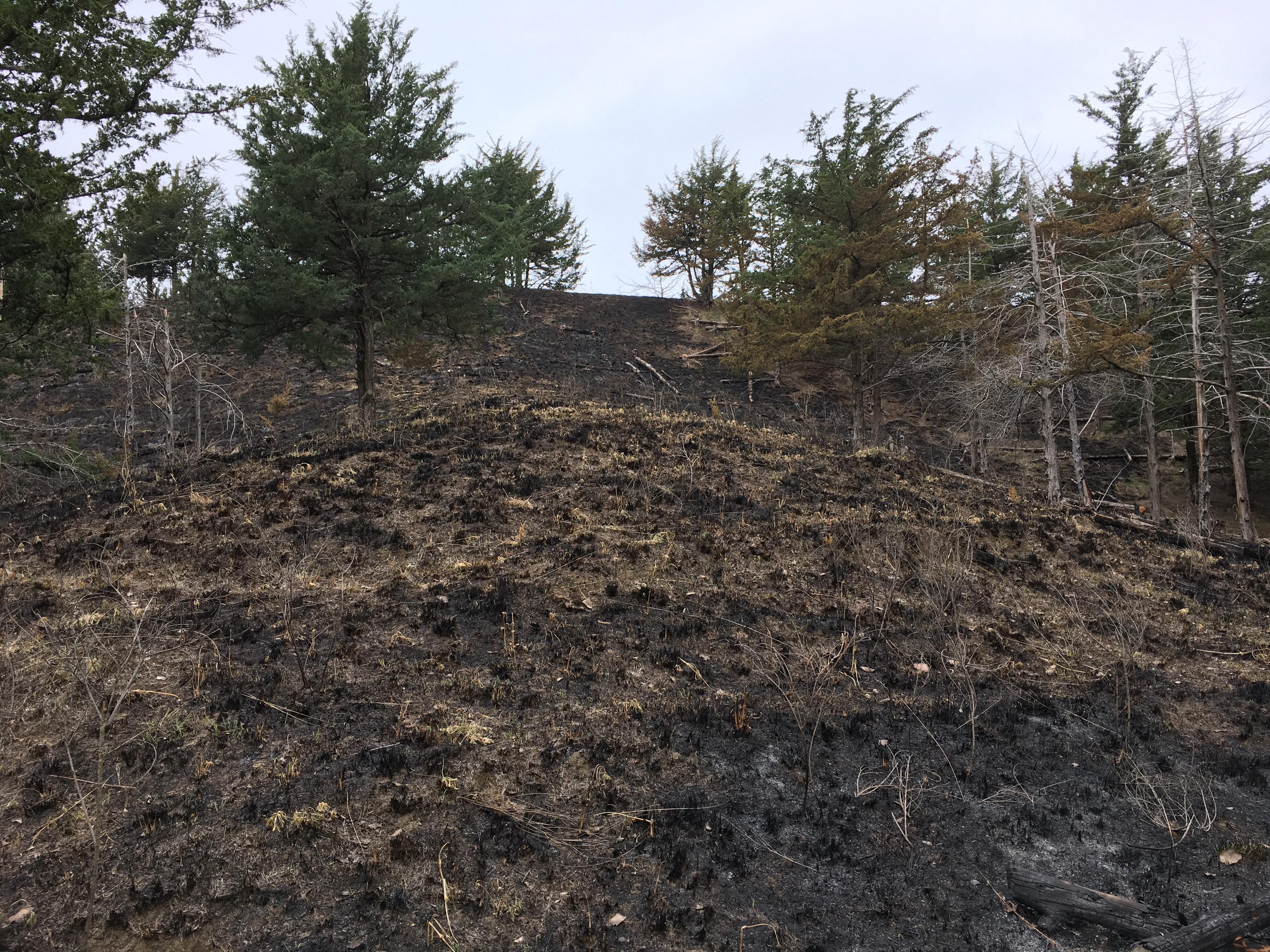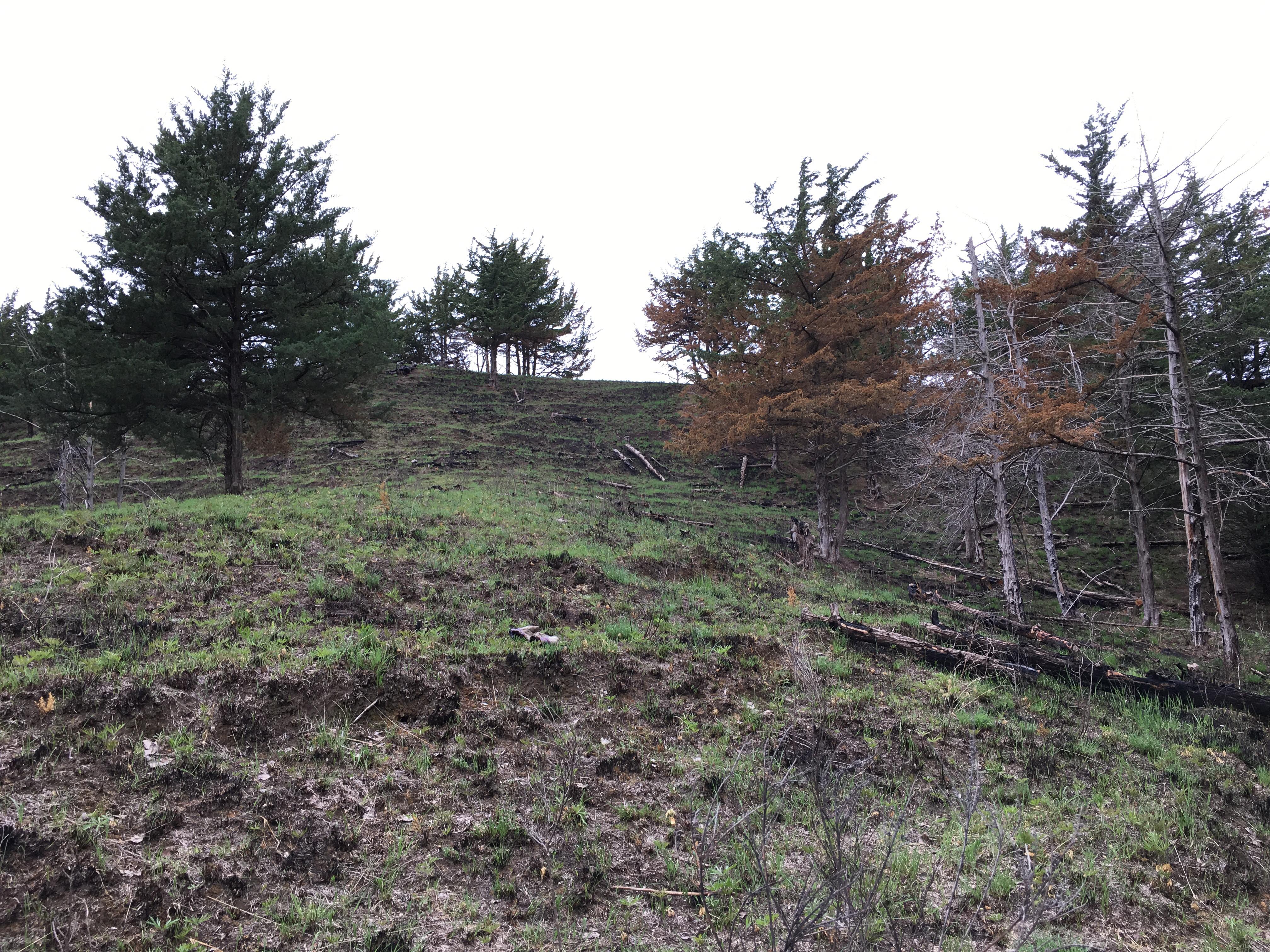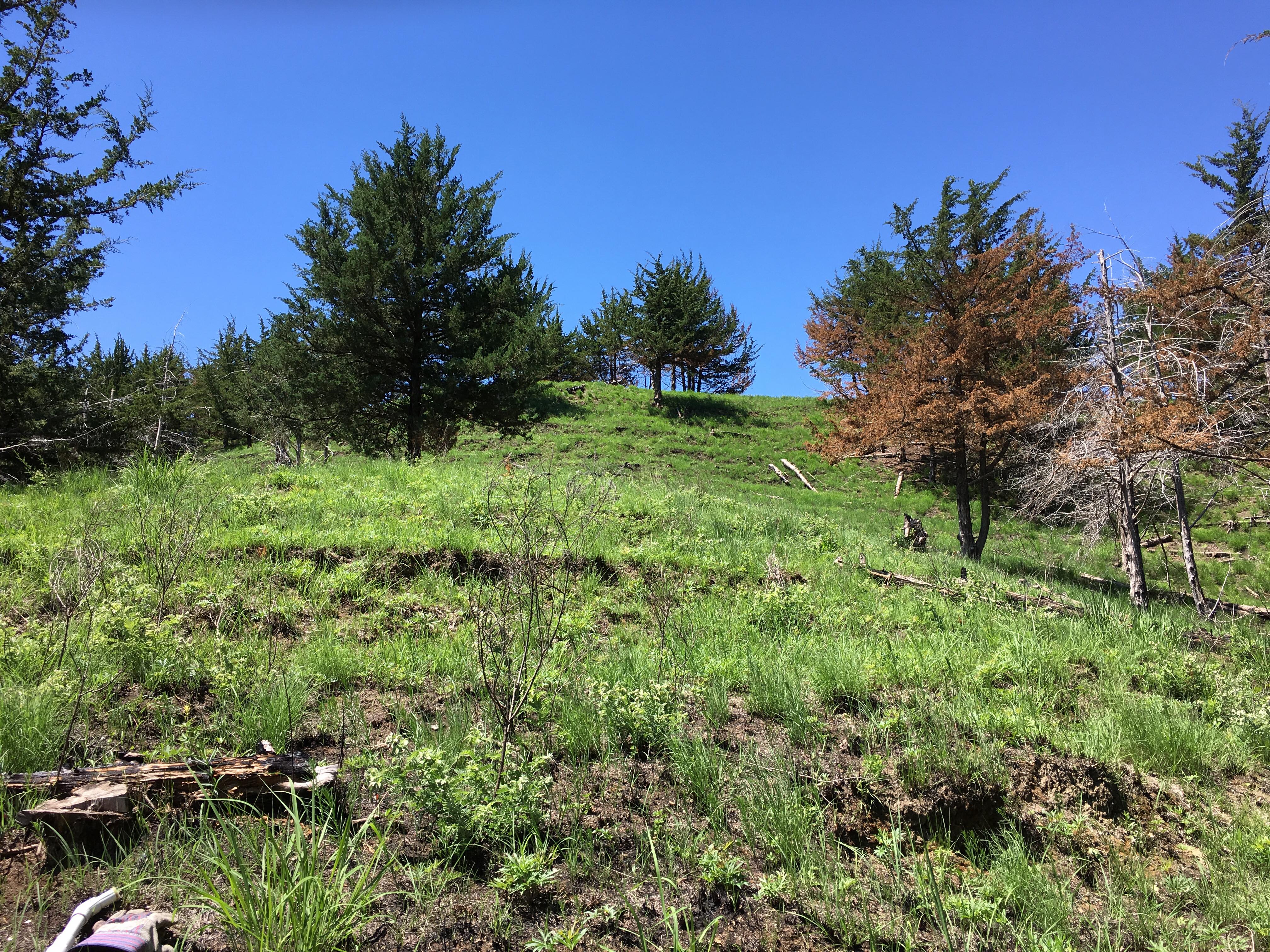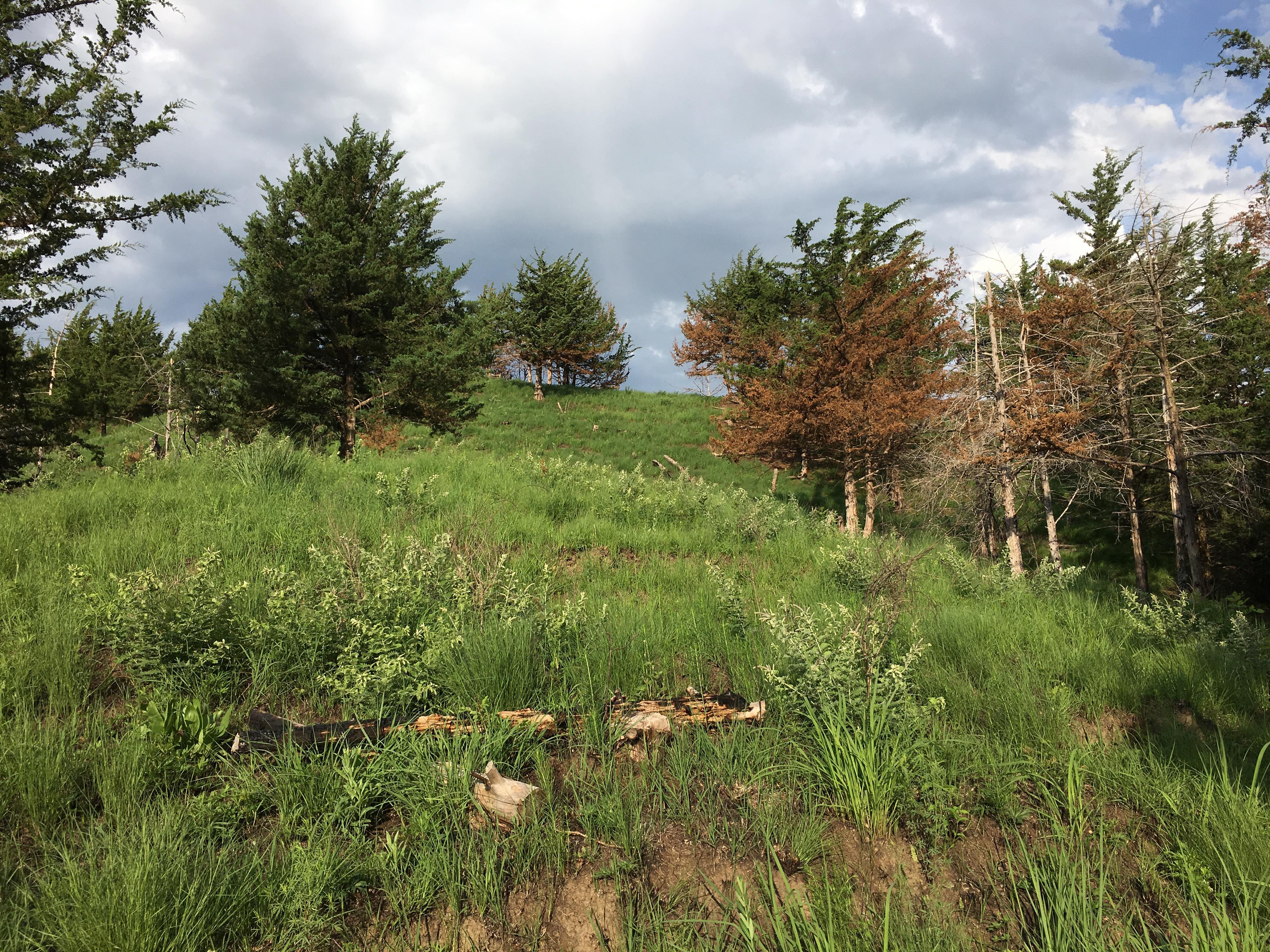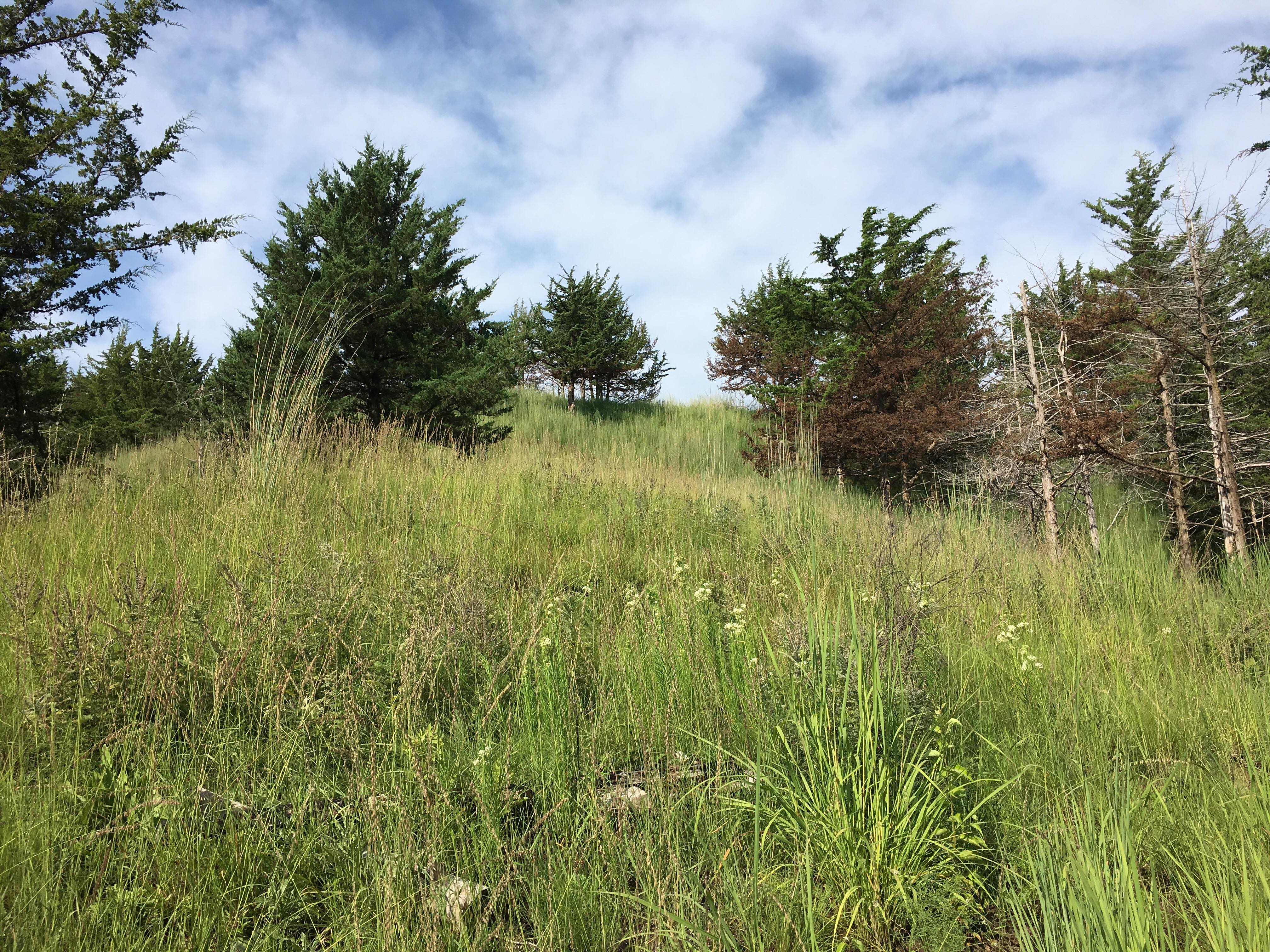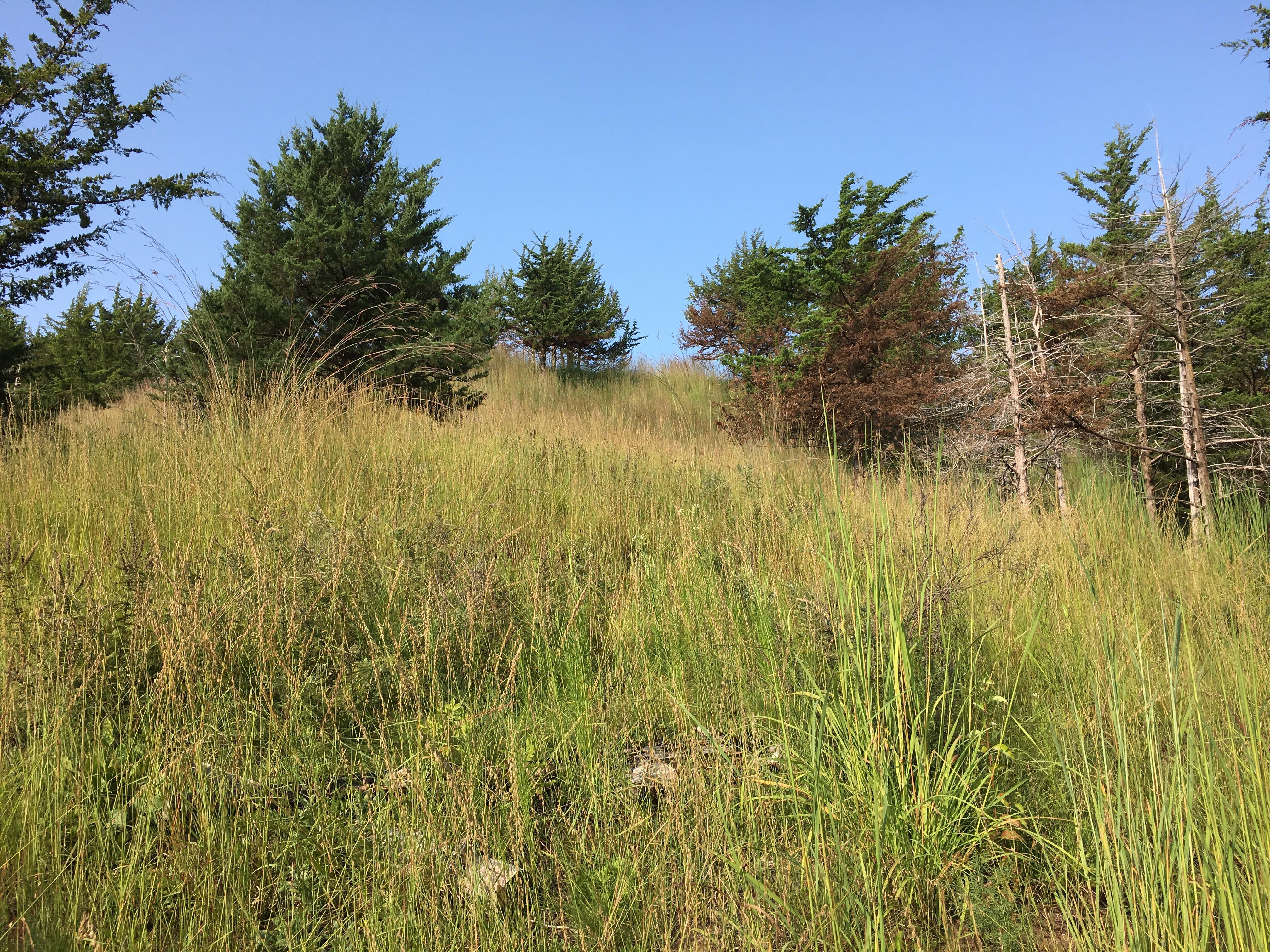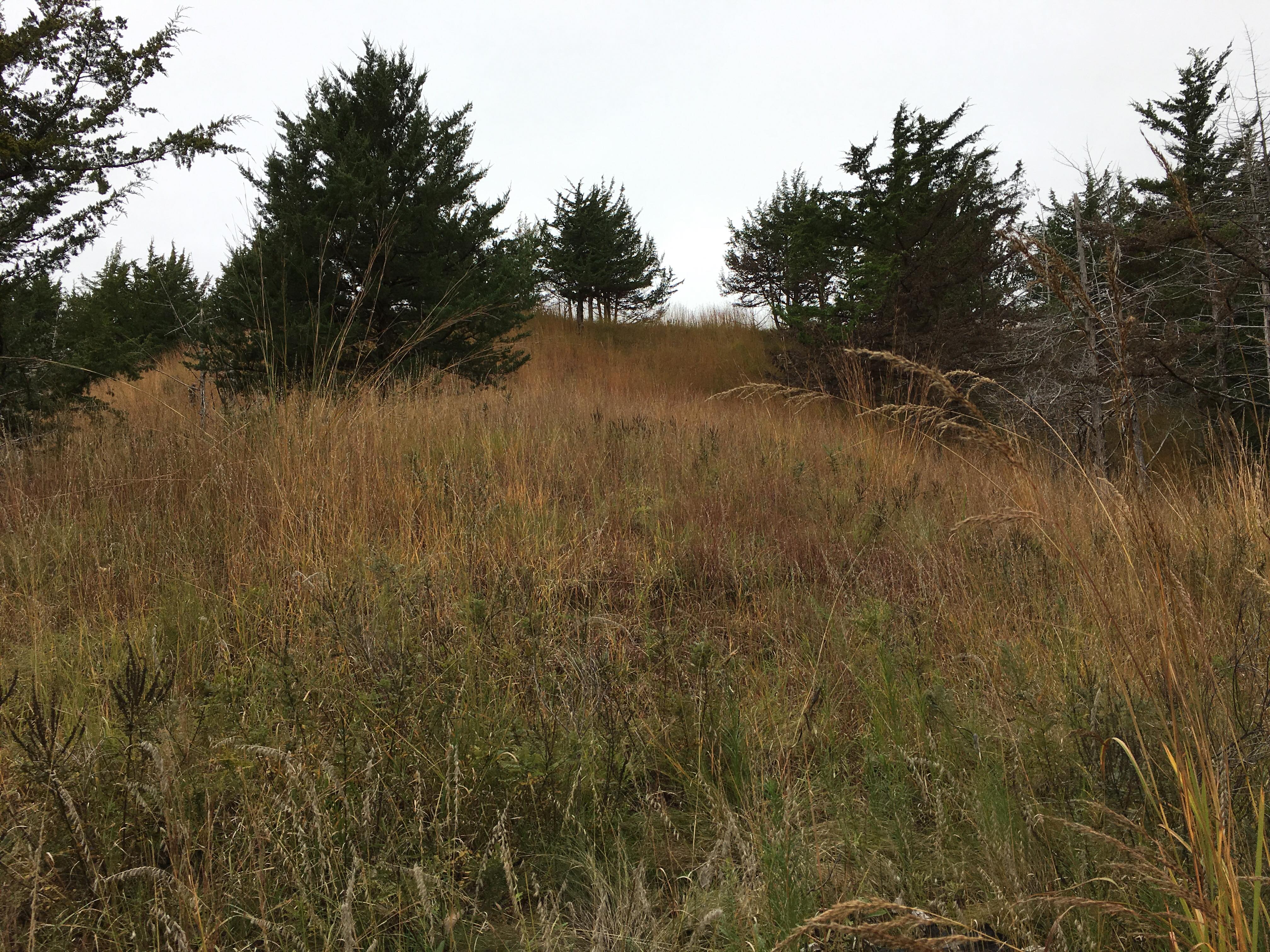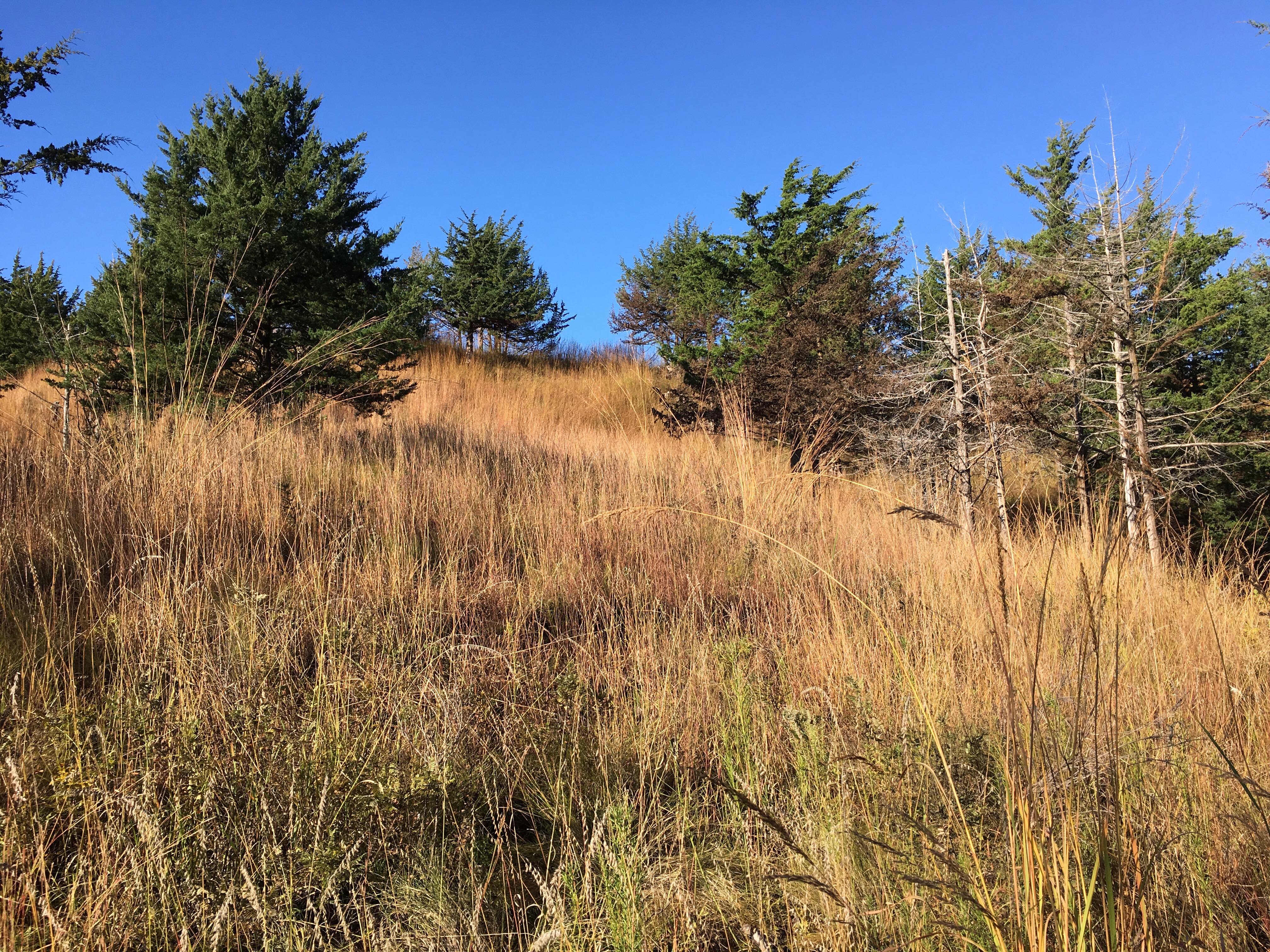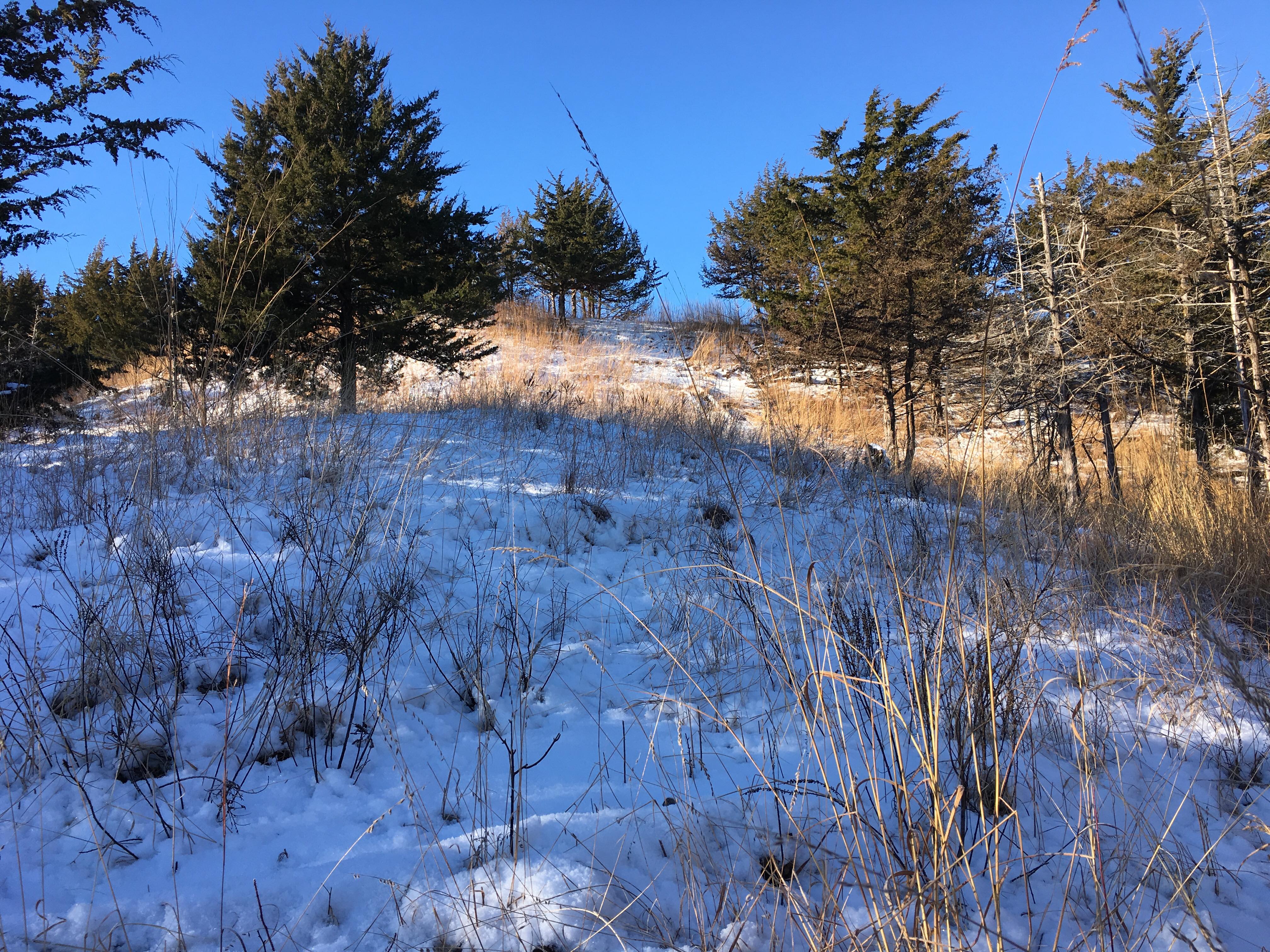Patrick Swanson has been restoring a prairie remnant in the Loess Hills of western Iowa. This post is a synopsis of the book he recently published about that experience, with pictures of one hillside on his Harrison County land throughout the seasons. – promoted by Laura Belin
Readers of Bleeding Heartland have seen many fine articles and commentary on environmental issues and, most particularly wildflowers, published on this site over the years. One might wonder where passion for nature, natural areas, and their denizens comes from.
Some reflection often reveals childhood experiences in nature that have developed and inspired a continued interest and engagement in the environment and environmental causes. Many could point to family excursions: visits to our parks and natural areas, hunting trips, or perhaps a family cabin. Some might point to participation in youth organizations that emphasize outdoor activities, such as the Boy and Girl Scouts or programs offered at local nature centers. Still others might find their interests originating in helping parents or grandparents with gardens in the back yard.
But what if you didn’t have these experiences as a child? How does one develop these interests as an adult? How and where might they be best manifested in your later years? And finally, how does faith and spiritual well-being integrate with and emanate from these experiences?
I have been pondering these questions lately, as I’ve considered what led me to pursue restoration of a prairie remnant in the Loess Hills of western Iowa. I’ve collected my thoughts and inspirations on these topics in a book I recently published, entitled One Man a Chainsaw: A Journey in Faith and Prairie Restoration (available here).
In purchasing a degraded native prairie, and starting the restoration process, I had to confront the “why” question that is invariably asked – Why are you doing this? Answering that question prodded me to reflect on my own experiences as a child and young adult, and my thoughts and feelings arising from them, that led me to this point. This process takes some time and emotional energy, and that wasn’t something I had really done before I was seriously forced think about it. And I doubt I’m the only one who has found themselves not creating the intellectual and emotional space to probe these self-reflecting “why” questions.
I grew up next to a nature center in Minnesota, which provided a huge de facto back yard for me to play in and explore. I also participated in summer gardening programs there, and had some school-supported field trips to conduct prairie restoration and management.
In reflecting on my “why” question, I realized those childhood experiences impacted my interests and development far more than I appreciated in my earlier years. They also fostered a love for prairies and places that led me to pursue prairie restoration activities as a volunteer as I moved around as a young adult and beyond.
Those activities, in turn, promoted awareness of our state of environmental degradation, and inspired a confidence that individuals and groups, working consistently and over time, can dramatically improve this condition. And as that recognition has grown, I have become more convinced than ever that offering such experiences to young people is integral to developing adults that understand and support environmental stewardship and connection to place.
Circling back to my earlier question, though, what happens if you didn’t get these experiences as a child? Here, my thoughts are informed by my volunteer efforts as a young adult at various nature reserves, most of which happened to be owned or initially purchased by The Nature Conservancy.
Volunteer stewardship workdays offered me a great way to learn about the flora and fauna of the ecosystems and the challenges they face in a group setting with like-minded individuals. I found I enjoyed the camaraderie and physical labor of restoration work very much, because it offered a nice diversion from my regular job and everyday stresses. Equally important, this work provided meaningful habitat improvements to increase the biodiversity and ecological health of the landscape. As these habitats improved, I was impressed and inspired by the resiliency and the breadth of the ecosystems. This, in turn, encouraged greater interest and involvement in their active management and protection.
Eventually, I found myself wanting to start a project of my own. To that end, I found and purchased a cedar-infested native prairie remnant in the Loess Hills of western Iowa. I won’t detail all the events leading up to the acquisition of the property, or discuss its features or the restoration work that I’ve done there over the last 10 years, as these are well-described in my book. What I will include here is a new series of time-lapse photographs after a prescribed burn in May 2018 looking up a hillside I cleared of cedars. These pictures help illustrate both the progress of the restoration, and the response of the prairie ecosystem to fire through one growing season.
I also want to leave the readers of this post with a few insights I have gained from my experiences restoring this property.
First, working to restore this prairie, over the years and through the seasons, has left an indelible impression on my soul, as much as my restoration work has left its impression on the landscape. This land has marked me.
I don’t think occasional visits to the land suffice to fully realize this, because so much of the flora and fauna of an ecosystem is seasonal or ephemeral in nature. I work in all seasons, and every season and every year, I see differences in the abundance, distribution, and interactions of the various species that inhabit the landscape. I simply could not observe this if I just worked or hiked the property a few times a year.
My second insight, related to the first, is that I’ve realized how much my restoration work fosters my spiritual, emotional, and physical well-being. We are part of creation, and the creation that we help sustain, also sustains us. This work gives me a sense of time, place, and purpose that is conceptually different from what I experience in my professional life (which I also very much enjoy).
The third insight I would offer is that when I conduct restoration work, I have found it very important to build in time for wandering the property, taking photographs (some of which I have posted on the Facebook group Iowa Wildflower Report and shared in an Iowa wildflower Wednesday post on this website, or just sitting silently and watching the wildlife. One of the ways I can ensure this happens, for example, is that I don’t bring any extra gasoline for the chainsaw. One tank gives me enough juice to clear a small copse of cedars and clean up the slash without feeling exhausted, so I can enjoy these other pursuits.
Nevertheless, the restoration work remains a key focal point of my experience, because hiking, photography, or nature watching, in and of themselves, don’t improve the landscape, they use it. This distinction is what I call the difference between a nature producing activity (i.e. one that increases the biological diversity of a degraded landscape), and a nature consuming activity (i.e. one that uses the landscape for recreational or professional activities). Engaging in both types of experiences is integral to maximizing my personal well-being.
I suggest in my book that each of us should do an honest self-appraisal of how much time we spend engaged in nature consuming activities and aspire to devote at least 10% of the time and money we spend on them to pursuing nature producing activities. Consider it a small payback for your enjoyment of the landscape.
I underscore that nature producing activities can be performed anywhere from regional natural areas and watercourses to your own back yard. They can span the gamut from native seed collecting or planting, participating in prescribed burns, or controlling invasive species, to cleaning up the neighborhood park or creek. Community-minded individuals and professionals in conservation-focused organizations can play a key role in providing these opportunities.
Most of these activities are both well-suited for adults and kids, and provide a good entry point to learn about the local environment and environmental stewardship. Together, they provide a range of active responses which improve the ecosystem and provide a connectivity to place that is not fully gained by passive responses like donating to or advocating for environmental causes. While both are valued and valuable, they are not equivalent in my view. I think we need to do both.
While this post highlights many of my viewpoints on environmental stewardship based on my own experiences, it does not delve into the faith journey this has involved for me. I will intentionally leave that to my book to describe. My motivation to write this post and my story is to provide some hope that even as we face significant environmental challenges, we as individuals and groups can still make significant impacts to restore the biodiversity and resiliency of our beautiful American landscapes. I would love to hear more stories from readers about their own efforts toward this goal to further inspire mine.
Happy New Year!
Photographs by Patrick Swanson of on hillside on the land he has been restoring, throughout the seasons.

